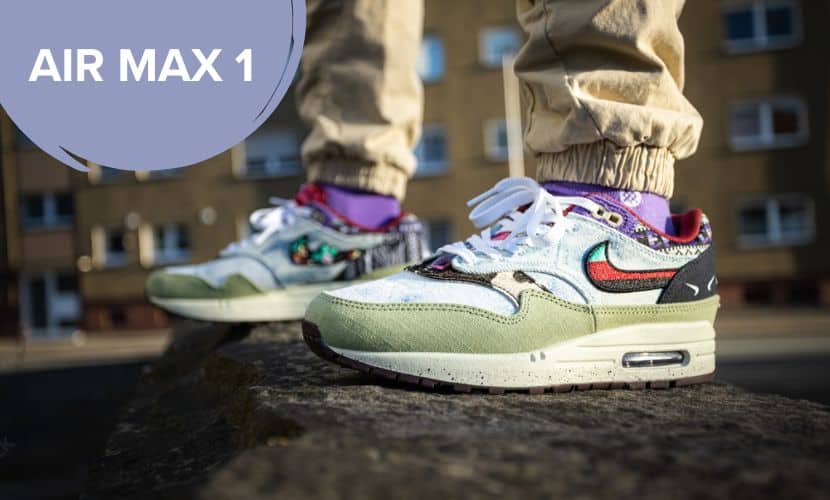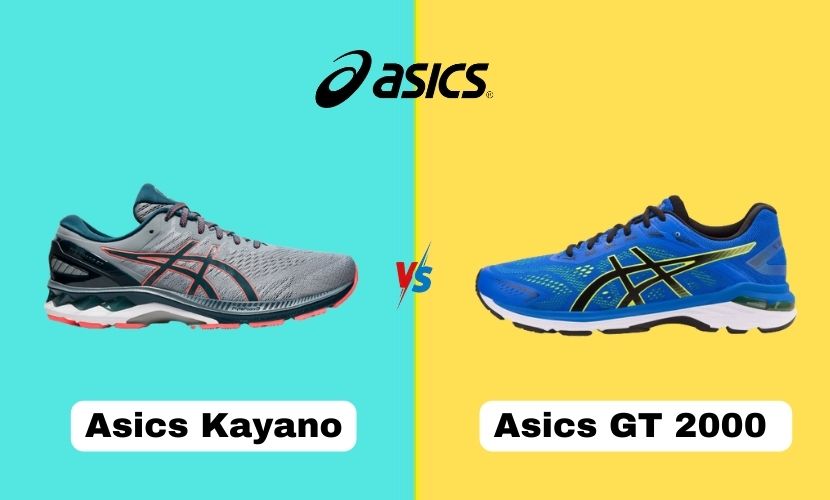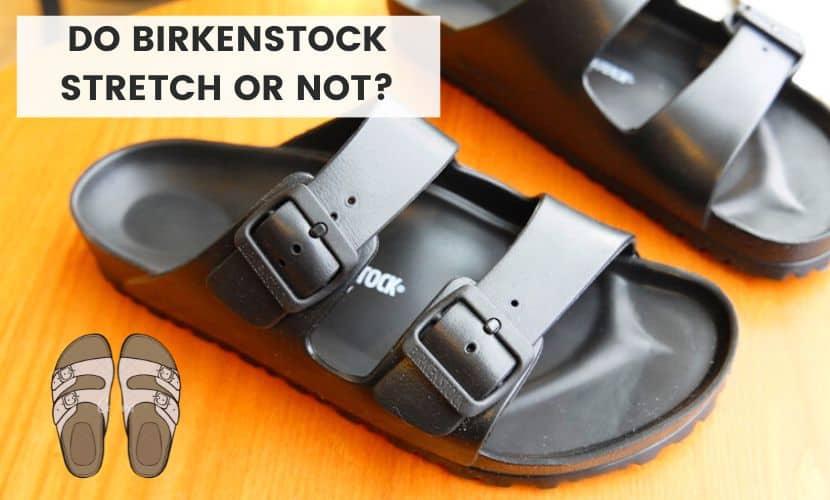Air Max 1 and Air Max 90 are two of the most well-liked and admired Nike sneakers in the market. They are both renowned shoes that have been around for decades and have been worn by millions worldwide. Despite being from the same Air Max family, their distinctive features make them stand out.
The Air Max 1 was first initiated in 1987 and was designed by Tinker Hatfield. It was the first shoe to display the trait of visible Air cushioning technology and was an expeditious hit among sneaker enthusiasts. On the contrary, the Air Max 90 was introduced in 1990 and created by Tinker Hatfield. It was a modernized version of the Air Max 1, featuring a more fantastic Air unit and a more sleek and efficient design. Despite being an upgraded version, the Air Max 90 quickly became authoritative and has been a fan favorite ever since.
There are some factors to consider regarding the contrast between the Air Max 1 and Air Max 90. The most remarkable differences include the design, colorways, and ease. The Air Max 1 has an uncomplicated design and is often regarded as a more flexible shoe that can be worn with diverse outfits.
The Air Max 90, at the same time, has a more compound design and is often seen as a particularized shoe that can add a burst of color to any outfit. Furthermore, the Air Max 90 is often more comfortable due to its larger Air unit and broad midsole.

Feature Comparison Table: Air Max 1 Vs. Air Max 90
| Features | Air Max 1 | Air Max 90 |
| Design | Sleek and simple design with a lengthy color block across the top of the upper. The Nike logo is visible on the side—low profile. | More complex design with black leather panels added to the sides for extra support. Popping mudguard on the side and a higher swoosh line. Few centimeters higher than Air Max 1. |
| Feature | Visible Air technology, Nike logo on the side, low profile, diverse colorways with lengthy color blocks. | Visible Air technology, Nike logo on the side, black leather panels, a few centimeters higher than Air Max 1, and more infrared colors. |
| Comfort | Relatively snug fit, comfortable, breathable upper made of synthetic leather and mesh, foam midsole with visible Air unit in the heel for cushioning and shock absorption. | Bulkier fit, comfortable, breathable upper made of leather and mesh, foam midsole with Vle Air unit in both the heel and forefoot for cushioning and shock absorption. Wider toe box for some users. |
| Durability | Sturdy construction combines leather, mesh, and synthetic overlays in the upper, durable rubber sole. Potential wear and tear on the mesh upper. | Sturdy construction with leather, mesh, synthetic overlays in the upper, larger visible Air unit in the midsole for cushioning and support, and durable rubber outsole. Potential compression of the Air unit over time. |
| Performance | Lightweight with good breathability, Phylon midsole, visible Air-Sole unit in the heel, good cushioning and shock absorption, rubber outsole with good traction. | Bulkier but still offers good performance, a thick midsole with a visible Air-Sole unit in the heel and forefoot, good cushioning and shock absorption, rubber outsole with good traction. |
| Price | Generally priced lower, ranging from $100 to $140, depending on colorway and collaborations. | Typically priced higher, ranging from $120 to $160, depending on colorway and collaborations. |

Design
When you move to design, the Air Max 1 and Air Max 90 have sharp differences that set them apart.
Air Max 1 Design
The Air Max 1 was first introduced in 1987 and was sketched by Tinker Hatfield. It was the first shoe to feature detectable Air technology and swiftly became an ethnic icon. The design of the Air Max 1 is streamlined and simple, with an extensive color block across the top of the upper. The Nike logo is noticeable on the side of the shoe, and the Air unit is prominent on the heel. The Air Max 1 has a low-side view, making it a versatile shoe.
Air Max 90 Design
The Air Max 90 was released in 1990 and was created by Tinker Hatfield. It was a remake of the Air Max 1 and featured assorted adjustments to the original design. The Air Max 90 has a more composite design than the Air Max 1, with black leather consoles added to the sides to provide a support layer. The Air Max 90 also has a snapping mudguard on the side and a higher agitated line. The shoe is a few centimeters greater than the Air Max 1, giving it a lavish feel.
Overall, the Air Max 1 and Air Max 90 have recognized design differences that isolate them. The Air Max 1 has a sleek and straightforward design, while the Air Max 90 has a more multiplex design with added hold-up features. Both shoes are eminent in their own right and continue to be popular among sneaker enthusiasts.
| Feature | Air Max 1 | Air Max 90 |
| Visible Air | Yes | Yes |
| Nike Logo | Side | Side |
| Support | Low Profile | Black Leather Panels |
| Height | Low | Few Centimeters Higher |
| Colorways | Diverse | More Infrared Colors |
- The Air Max 1 has a lengthy color block across the upper top. In contrast, the Air Max 90 has black leather panels added to the sides.
- The Air Max 1 has a low profile, while the Air Max 90 is a few centimeters higher.
- The Air Max 1 has a more diverse range of colorways, while the Air Max 90 uses more infrared colors.
- Both shoes feature visible Air technology and the Nike logo.

Comfort
Regarding comfort, the Air Max 1 and Air Max 90 have toughness and debility. In this section, we’ll directly examine each model’s comfort extent.
Air Max 1 Comfort
The Air Max 1 is a comparably snug shoe, which might need more break-in time for beginners. Although, long-term users often find the AM1 to be one of the most secure Air Max retros. The shoe’s upper is made of a fusion of materials, including fabricated leather and mesh, which supply a comfortable and breathable fit. The shoe also provides a foam midsole with a detectable Air unit in the heel, which offers magnificent cushioning and shock absorption.
Air Max 90 Comfort
The Air Max 90 is an enormous shoe compared to the Air Max 1, but it proposes a more comfortable fit for some users. The shoe’s upper is made of a mixture of materials, including leather and mesh, which supports a comfortable and breathable fit. The shoe also features a foam midsole with a detectable Air unit in both the heel and forefoot, which supplies excellent cushioning and blow absorption.
Regarding sizing, the Air Max 1 and Air Max 90 fit true to size for most users. Some users with broad feet might find the Air Max 90 a more comfy fit due to its wider toe box.
Generally, both the Air Max 1 and Air Max 90 offers outstanding comfort and cushioning, making them excellent choices for everyday wear and athletic activities.
Also read more on: Asics Vs Skechers
Durability
Regarding durability, the Air Max 1 and Air Max 90 are valuable for investment. Nike shoes have fame for their longevity, and the Air Max sequence is no exception. However, some things could be improved in the durability of these two sneakers.
Air Max 1 Durability
The Air Max 1 is famous for its sturdy construction. The exterior is made of combined materials such as, combination of leather, mesh, and manufactured overlays. The midsole offers a visible Air unit that gives cushioning and support. The outsole is made of long-lasting rubber that provides excellent traction.
One potential problem with the Air Max 1 is that the netting and tracery upper can be prone to erosion over time. However, this can be reduced by taking care of the shoes and keeping them away from rough surfaces.
Air Max 90 Durability
The Air Max 90 is also a resistant sneaker with a similar fabrication to the Air Max 1. The upper part is leather and mesh, with factitious overlays for added support. The midsole offers a larger visible Air unit than the Air Max 1, giving even more cushioning and support. The outsole is made of enduring rubber that provides excellent traction.
One potential difficulty with the Air Max 90 is that the midsole can become squeezed over time, reducing the efficacy of the Air unit. However, this can be lessened by taking care of the shoes and avoiding extravagant wear.
Air Max 1 and Air Max 90 are solid and sound sneakers that can withstand methodical wear and tear. Although the Air Max 1 may be more prone to wear and tear on the openwork upper, the Air Max 90 may experience constriction of the Air unit over time.
Performance
Air Max 1 Performance
The Air Max 1 is a feathery shoe with good breathability and comfort. It provides a Phylon midsole and a prominent Air-Sole unit in the heel. The shoe gives good cushioning and shock absorption, making it a fantastic selection for running and other physical activities. The rubber outsole supplies good traction on different surfaces, making it a multiskilled shoe for various activities.
Air Max 90 Performance
The Air Max 90 is a heavier shoe compared to the Air Max 1, but it still proffers good performance. The shoe features a bulkier midsole with a visible Air-Sole unit in the heel and forefoot. The shoe supplies good cushioning and shock absorption, making it an acceptable choice for running and other physical ventures. The rubber outsole provides a good grip on different surfaces, making it an adjustable shoe for numerous activities.
Regarding performance, both shoes offer satisfactory cushioning and shock absorption. However, the Air Max 1 is lighter and more breathable, while the Air Max 90 is heavier and gives more support. It eventually comes down to personal fondness and the particular needs of the wearer.
Price
Price is frequently a determining factor when buying a new pair of sneakers. This portion examines the price variance between the Air Max 1 and the Air Max 90.
Air Max 1 Price
The Air Max 1 is usually priced lesser than the Air Max 90. The retail price of the Air Max 1 scales from $100 to $140, depending on the colorway and any noteworthy collaborations. Although, prices may vary depending on the trader and present-day market demand.
Air Max 90 Price
The Air Max 90 is priced higher than the Air Max 1. The market price of the Air Max 90 ranges from $120 to $160, depending on the color shades and any unique collaborations. As with the Air Max 1, prices may differ depending on the retailer and current market request.
Overall, the price difference between the Air Max 1 and the Air Max 90 is not remarkable, with the Air Max 90 being slightly more expensive. However, it’s necessary to remember that prices may vary depending on the solid colorway and any unique collaborations. It’s always a righteous idea to shop around and contrast prices before purchasing.
Conclusion
Ultimately, the selection between the Air Max 1 and the Air Max 90 comes down to personal likeness and priorities. The Air Max 1 is a more sleek and slightest design, focusing on simplicity and adaptability.
Conversely, the Air Max 90 is more robust and eye-catching, with a bold color plan and more intricate details.
The Air Max 90 may be the stunning choice for those focusing on comfort and cushioning, thanks to its vast Air unit and more substantial midsole. Although, for those who value a streamlined and understated look, you can go for the Air Max 1.
Ultimately, both shoes have their firmness and weaknesses, and it’s up to the person to decide which components are most important to them. Whether you’re a sneaker lover searching to add to your shoe cluster or someone requiring a good and stylish pair of sneakers, opt for Air Max 1 and the Air Max 90.
Read more on:




